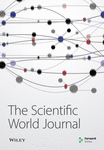Results of a Randomized, Open-Label, Clinical Trial Investigating the Effects of Supplementation with Heracleum persicum Extract as an Adjunctive Therapy for Dyslipidemia
Abstract
The present study evaluated the potential benefit of supplementation with Heracleum persicum as an adjunctive therapy to atorvastatin in dyslipidemic subjects. In a randomized, open-label, clinical trial, 100 dyslipidemic subjects were randomly assigned to: (1) H. persicum group (n = 50, completers = 18), receiving H. persicum extract (500 mg/day) + atorvastatin (10 mg/day) for 8 weeks, or (2) atorvastatin group (n =50, completers= 34), receiving only atorvastatin (20 mg/day) for 8 weeks. Weight, body mass index (BMI), lipid profile, and biomarkers of hepatic and renal injury were determined at baseline and at the end of the trial. There were significant reductions in serum total cholesterol and LDL-C in both the H. persicum (p = 0.001) and atorvastatin (p < 0.05) groups. Serum HDL-C was elevated in the atorvastatin group (p < 0.05), while no significant change was observed in the H. persicum group (p > 0.05). Serum triglyceride levels remained statistically unchanged by the end of the trial in both groups (p > 0.05). Serum alanine (p = 0.049) and aspartate aminotransferase (p = 0.013) levels rose in the atorvastatin, but not the H. persicum (p > 0.05) group. In comparison with baseline values, no significant change was observed in weight and BMI, as well as serum levels of creatinine, blood urea nitrogen, and fasting blood sugar in either of the groups (p > 0.05). Apart from HDL-C, the effects of atorvastatin (20 mg/day) on other lipid profile parameters do not appear to be significantly superior to those achieved by combination therapy with H. persicum + atorvastatin (10 mg/day).




